Do you have a question about the Kenwood DDX7015 and is the answer not in the manual?
Instructions for inserting and replacing the remote control battery.
Guidelines for cleaning the unit's panel, monitor, and disc slot.
Explanation of lens fogging and recommended actions.
Map showing DVD player region codes by country.
Explains icons used throughout the manual for clarity.
Guidelines for handling, removing, and storing discs to prevent damage.
Lists discs not supported by the player.
Details acceptable media types and file format limitations for MP3/WMA.
Rules for naming files/folders and playing order for MP3/WMA.
Overview of buttons and controls on the main unit.
Explains the buttons and modes of the remote control unit.
Describes different picture modes like FULL, JUST, CINEMA, ZOOM, NORMAL.
Details the layout and functions of DVD/VCD playback screens.
Navigating and using the DVD Disc Menu options.
Explains the buttons and features within the DVD Disc Menu.
Describes how to use the zoom function for DVD playback.
How to enlarge and navigate VCD content.
How to search for DVD/VCD content by entering numbers.
Overview of the tuner's basic controls.
How to set station selection modes for the tuner.
Procedures for storing and recalling radio stations.
How to list and tune in preset stations.
How to assign custom names to tuned stations.
Tunes to stations by entering their frequency.
How the system handles traffic bulletins.
Tuning to stations based on program type.
How to view text information broadcast with radio signals.
Basic controls for CD, MP3, WMA, and Disc Changer playback.
Detailed controls for CD playback.
Detailed controls for MP3/WMA playback.
Detailed controls for Disc Changer playback.
How to name CDs for easier identification.
Navigating MP3/WMA files on a disc.
Viewing metadata for MP3/WMA files.
Choosing discs when using a disc changer.
Searching for discs or songs by number.
How the system mutes audio during phone calls.
Overview of the TV display screen.
Basic controls for TV reception.
Managing TV stations using seek and memory features.
Tuning to preset TV stations.
Assigning names to TV channels.
Tuning TV channels by entering the number.
Overview of the SIRIUS tuner's basic interface.
Searching for SIRIUS channels by category.
Storing and recalling SIRIUS channels.
Tuning SIRIUS channels by entering the number.
Viewing information about the current SIRIUS program.
Overview of the HD Radio tuner's basic interface.
How to set station selection modes for HD Radio.
Storing and recalling HD Radio stations.
Selecting digital or analog reception for HD Radio.
Viewing song title information for HD Radio.
Overview of the DAB tuner's basic interface.
How to set service selection modes for DAB.
Storing and recalling DAB services.
Storing DAB ensembles automatically.
Selecting available DAB services.
Filtering DAB content by language.
Tuning DAB stations by program type.
Selecting language for DAB display.
Viewing details about DAB services and components.
Managing automatic announcements for DAB.
Overview of the weather band tuner's basic interface.
How to input text for naming or other entries.
Choosing the desired input source for audio or video.
Adjusting brightness, tint, color, contrast, and black level.
Adjusting the monitor's tilt angle for optimal viewing.
Overview of how to access and use the setup menu.
Setting up speaker types and parameters.
Configuring crossover frequencies for speakers.
Configuring audio settings based on car type.
Step-by-step guide for adjusting channel levels.
Manually setting sound output timing for each channel.
Configuring high pass filters for crossover networks.
Configuring low pass filters for crossover networks.
Initial screen for configuring DVD playback settings.
Advanced DVD playback settings.
List of language codes for speech and menus.
Screen for setting parental control codes.
Procedures for entering and setting parental levels.
Initial screen for system parameter configuration.
Advanced system setup options.
Configuring the first AV interface connection.
Configuring the second AV interface connection.
Basic user interface customization options.
Advanced user interface customization options.
Calibrating the touch panel for accurate input.
Setting and adjusting the system clock time.
Steps for setting a security code to protect the unit.
Screen for viewing the SIRIUS ID.
Screen for adjusting power amplifier settings.
Configuring DAB reception settings.
Setting reception parameters for announcements.
Accessing and navigating the sound effects menu.
Adjusting front/rear and left/right audio balance.
Adjusting bass boost and subwoofer levels.
Setting equalizer curves and types.
Configuring tone curves for audio equalization.
Adjusting equalizer curve with center frequency, gain, and Q value.
Setting different audio sources for front and rear speakers.
Configuring digital sound effects like PCM Center and Dolby Pro Logic.
Adjusting sound effects based on listening position.
Definitions for DVD, VCD, MPEG, Dolby Digital, DTS, and playback controls.
Definitions for menu, title, chapter, and subtitle related terms.
Common problems related to power, source, display, and remote.
Troubleshooting audio reception, disc playback, and subtitle issues.
Resolving MP3/WMA playback problems and error codes.
Technical details of monitor, DVD, tuner, video, audio, and general components.
Regulatory compliance statements including FCC and ICES-003.
Information on trademarks and copyright protection technology.
Identifies the accessories provided for installation.
Instructions for installing the unit in a vehicle.
Details on connecting power, ignition, and control wires.
Wiring for speakers and remote control sensor.
Diagrams showing connections between units like navigation, tuner, DSP.
Instructions on how to securely mount the main unit.
Guidance for installing using car-specific brackets.
Steps to remove the hard rubber frame or escutcheon.
Step-by-step guide for physically removing the unit.
Details on what is covered, not covered, and warranty limitations.
Important safety advice before operating the navigation system.
Guidelines for handling and storing navigation map discs.
Procedures for installing and removing navigation map discs.
Information about map disc regions and content.
Steps to start and initialize the navigation system.
How to select the language for menus and voice guidance.
Explains screens before and during route guidance.
How to adjust the map's view direction (heading up or north up).
How to zoom in or out on the map display.
How to set a destination by manually scrolling the map.
Choosing between Quick, Altern, and Short routes.
How to set destinations using the navigation menu options.
Entering an address to set a destination.
Procedures for entering street names and searching towns.
Using stored memory points as destinations.
Setting home location or previously stored destinations.
Searching for and selecting Points of Interest (POI).
Deleting or viewing previous destinations.
Choosing a destination directly from the map display.
Finding and selecting freeway entrances or exits.
Finding nearest police stations or hospitals.
Using latitude and longitude to set destinations.
Setting destinations by specifying two street names.
Finding destinations using phone numbers.
Modifying the geographical area for searches.
Explaining the turn arrow and turn list displays.
Automatic display of junction diagrams for clearer guidance.
Showing freeway information like exits and facilities.
Adjusting parameters for route calculation.
Setting conditions like Quick, Altern, or Short routes.
Calculating alternative routes based on distance.
Configuring preferences like allowing major roads or ferries.
Adding intermediate destinations to a route.
Changing the order or position of destinations/way points.
Removing destinations or way points from a route.
Viewing the entire calculated route.
Simulating the route to check guidance.
Configuring conditions for route simulation runs.
Overview of system setup options.
Adjusting the system's volume levels.
Switching between 2D and 3D map views.
Correcting errors in vehicle position or direction display.
Automatically correcting distance errors after tire changes.
Displaying GPS signal strength and vehicle data.
Checking the version of the currently used map disc.
Configuring the system clock time and display.
Resetting all system settings to factory defaults.
Overview of storing, editing, and deleting locations.
Adding new locations to memory.
Editing names, icons, and other details of memory points.
Modifying phone numbers and other specific details.
Removing specific memory points.
Removing all stored memory points.
Customizing names for categories like Personal, Business.
Setting the home address as a destination.
Removing previously set destinations from history.
Saving frequently used destinations for one-touch access.
Editing or confirming stored preset destinations.
Showing various POI categories on the map.
Searching for specific POIs on the map.
Viewing detailed information about selected POIs.
Removing POI markers from the map.
Explains the functions of the remote control unit.
Assigning functions to shortcut keys on the remote.
How voice recognition works with the system.
Choosing the language for voice commands.
List of voice commands and their functions.
How vehicle position is tracked and its accuracy.
Factors affecting route guidance accuracy and behavior.
Solutions for problems like no power, map scrolling, or voice guidance.
Technical details of navigation system components.
Instructions for inserting and replacing the remote control battery.
Guidelines for cleaning the unit's panel, monitor, and disc slot.
Explanation of lens fogging and recommended actions.
Map showing DVD player region codes by country.
Explains icons used throughout the manual for clarity.
Guidelines for handling, removing, and storing discs to prevent damage.
Lists discs not supported by the player.
Details acceptable media types and file format limitations for MP3/WMA.
Rules for naming files/folders and playing order for MP3/WMA.
Overview of buttons and controls on the main unit.
Explains the buttons and modes of the remote control unit.
Describes different picture modes like FULL, JUST, CINEMA, ZOOM, NORMAL.
Details the layout and functions of DVD/VCD playback screens.
Navigating and using the DVD Disc Menu options.
Explains the buttons and features within the DVD Disc Menu.
Describes how to use the zoom function for DVD playback.
How to enlarge and navigate VCD content.
How to search for DVD/VCD content by entering numbers.
Overview of the tuner's basic controls.
How to set station selection modes for the tuner.
Procedures for storing and recalling radio stations.
How to list and tune in preset stations.
How to assign custom names to tuned stations.
Tunes to stations by entering their frequency.
How the system handles traffic bulletins.
Tuning to stations based on program type.
How to view text information broadcast with radio signals.
Basic controls for CD, MP3, WMA, and Disc Changer playback.
Detailed controls for CD playback.
Detailed controls for MP3/WMA playback.
Detailed controls for Disc Changer playback.
How to name CDs for easier identification.
Navigating MP3/WMA files on a disc.
Viewing metadata for MP3/WMA files.
Choosing discs when using a disc changer.
Searching for discs or songs by number.
How the system mutes audio during phone calls.
Overview of the TV display screen.
Basic controls for TV reception.
Managing TV stations using seek and memory features.
Tuning to preset TV stations.
Assigning names to TV channels.
Tuning TV channels by entering the number.
Overview of the SIRIUS tuner's basic interface.
Searching for SIRIUS channels by category.
Storing and recalling SIRIUS channels.
Tuning SIRIUS channels by entering the number.
Viewing information about the current SIRIUS program.
Overview of the HD Radio tuner's basic interface.
How to set station selection modes for HD Radio.
Storing and recalling HD Radio stations.
Selecting digital or analog reception for HD Radio.
Viewing song title information for HD Radio.
Overview of the DAB tuner's basic interface.
How to set service selection modes for DAB.
Storing and recalling DAB services.
Storing DAB ensembles automatically.
Selecting available DAB services.
Filtering DAB content by language.
Tuning DAB stations by program type.
Selecting language for DAB display.
Viewing details about DAB services and components.
Managing automatic announcements for DAB.
Overview of the weather band tuner's basic interface.
How to input text for naming or other entries.
Choosing the desired input source for audio or video.
Adjusting brightness, tint, color, contrast, and black level.
Adjusting the monitor's tilt angle for optimal viewing.
Overview of how to access and use the setup menu.
Setting up speaker types and parameters.
Configuring crossover frequencies for speakers.
Configuring audio settings based on car type.
Step-by-step guide for adjusting channel levels.
Manually setting sound output timing for each channel.
Configuring high pass filters for crossover networks.
Configuring low pass filters for crossover networks.
Initial screen for configuring DVD playback settings.
Advanced DVD playback settings.
List of language codes for speech and menus.
Screen for setting parental control codes.
Procedures for entering and setting parental levels.
Initial screen for system parameter configuration.
Advanced system setup options.
Configuring the first AV interface connection.
Configuring the second AV interface connection.
Basic user interface customization options.
Advanced user interface customization options.
Calibrating the touch panel for accurate input.
Setting and adjusting the system clock time.
Steps for setting a security code to protect the unit.
Screen for viewing the SIRIUS ID.
Screen for adjusting power amplifier settings.
Configuring DAB reception settings.
Setting reception parameters for announcements.
Accessing and navigating the sound effects menu.
Adjusting front/rear and left/right audio balance.
Adjusting bass boost and subwoofer levels.
Setting equalizer curves and types.
Configuring tone curves for audio equalization.
Adjusting equalizer curve with center frequency, gain, and Q value.
Setting different audio sources for front and rear speakers.
Configuring digital sound effects like PCM Center and Dolby Pro Logic.
Adjusting sound effects based on listening position.
Definitions for DVD, VCD, MPEG, Dolby Digital, DTS, and playback controls.
Definitions for menu, title, chapter, and subtitle related terms.
Common problems related to power, source, display, and remote.
Troubleshooting audio reception, disc playback, and subtitle issues.
Resolving MP3/WMA playback problems and error codes.
Technical details of monitor, DVD, tuner, video, audio, and general components.
Regulatory compliance statements including FCC and ICES-003.
Information on trademarks and copyright protection technology.
Identifies the accessories provided for installation.
Instructions for installing the unit in a vehicle.
Details on connecting power, ignition, and control wires.
Wiring for speakers and remote control sensor.
Diagrams showing connections between units like navigation, tuner, DSP.
Instructions on how to securely mount the main unit.
Guidance for installing using car-specific brackets.
Steps to remove the hard rubber frame or escutcheon.
Step-by-step guide for physically removing the unit.
Details on what is covered, not covered, and warranty limitations.
Important safety advice before operating the navigation system.
Guidelines for handling and storing navigation map discs.
Procedures for installing and removing navigation map discs.
Information about map disc regions and content.
Steps to start and initialize the navigation system.
How to select the language for menus and voice guidance.
Explains screens before and during route guidance.
How to adjust the map's view direction (heading up or north up).
How to zoom in or out on the map display.
How to set a destination by manually scrolling the map.
Choosing between Quick, Altern, and Short routes.
How to set destinations using the navigation menu options.
Entering an address to set a destination.
Procedures for entering street names and searching towns.
Using stored memory points as destinations.
Setting home location or previously stored destinations.
Searching for and selecting Points of Interest (POI).
Deleting or viewing previous destinations.
Choosing a destination directly from the map display.
Finding and selecting freeway entrances or exits.
Finding nearest police stations or hospitals.
Using latitude and longitude to set destinations.
Setting destinations by specifying two street names.
Finding destinations using phone numbers.
Modifying the geographical area for searches.
Explaining the turn arrow and turn list displays.
Automatic display of junction diagrams for clearer guidance.
Showing freeway information like exits and facilities.
Adjusting parameters for route calculation.
Setting conditions like Quick, Altern, or Short routes.
Calculating alternative routes based on distance.
Configuring preferences like allowing major roads or ferries.
Adding intermediate destinations to a route.
Changing the order or position of destinations/way points.
Removing destinations or way points from a route.
Viewing the entire calculated route.
Simulating the route to check guidance.
Configuring conditions for route simulation runs.
Overview of system setup options.
Adjusting the system's volume levels.
Switching between 2D and 3D map views.
Correcting errors in vehicle position or direction display.
Automatically correcting distance errors after tire changes.
Displaying GPS signal strength and vehicle data.
Checking the version of the currently used map disc.
Configuring the system clock time and display.
Resetting all system settings to factory defaults.
Overview of storing, editing, and deleting locations.
Adding new locations to memory.
Editing names, icons, and other details of memory points.
Modifying phone numbers and other specific details.
Removing specific memory points.
Removing all stored memory points.
Customizing names for categories like Personal, Business.
Setting the home address as a destination.
Removing previously set destinations from history.
Saving frequently used destinations for one-touch access.
Editing or confirming stored preset destinations.
Showing various POI categories on the map.
Searching for specific POIs on the map.
Viewing detailed information about selected POIs.
Removing POI markers from the map.
Explains the functions of the remote control unit.
Assigning functions to shortcut keys on the remote.
How voice recognition works with the system.
Choosing the language for voice commands.
List of voice commands and their functions.
How vehicle position is tracked and its accuracy.
Factors affecting route guidance accuracy and behavior.
Solutions for problems like no power, map scrolling, or voice guidance.
Technical details of navigation system components.
| Resolution | 800 x 480 pixels |
|---|---|
| Touchscreen | Yes |
| Bluetooth | Yes |
| USB Ports | 1 |
| Preamp Outputs | 3 Pairs (Front, Rear, Subwoofer) |
| Power Output | 50 watts x 4 channels |
| DVD Player | Yes |
| Apple CarPlay | No |
| Android Auto | No |
| CD Player | Yes |
| Built-in Amplifier | Yes |
| Radio Tuner | AM/FM |
| Detachable Faceplate | Yes |
| Illumination | Variable color |
| Audio Formats Supported | MP3, WMA |
| Video Formats Supported | MPEG-1, MPEG-2 |
| Navigation | Optional |
| Inputs | AV Input |
| Outputs | Video output |
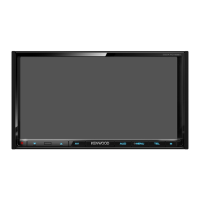
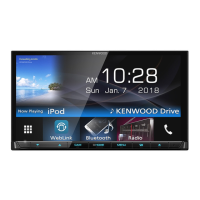
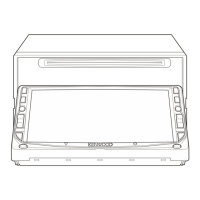
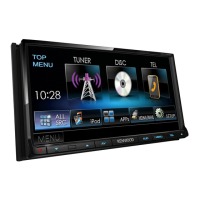



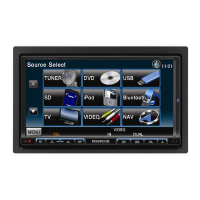
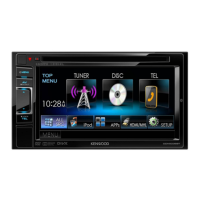
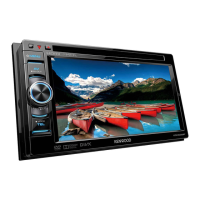

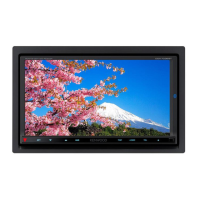
